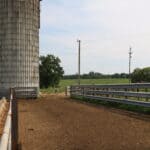The trend towards sustainable agriculture has introduced innovative practices like the repurposing of guardrails, marking a significant step in eco-smart farming. This article explores how these materials are being used to create environmentally friendly and cost-efficient farming solutions.
Eco-Smart Farming: A New Agricultural Paradigm
Eco-smart farming represents a paradigm shift in agriculture, focusing on sustainability and efficient resource use. The integration of repurposed guardrails into farm infrastructure is a prime example of this innovative approach.
The Economic Benefits of Repurposed Guardrails in Farming
Farming with repurposed guardrails not only supports environmental goals but also offers significant economic benefits. These durable materials provide a cost-effective alternative to traditional farming infrastructure, reducing overall expenses.
Sustainability and Environmental Conservation
Repurposing guardrails for agricultural use aligns with the principles of environmental conservation. This practice reduces waste and conserves resources, contributing to the overall health of the ecosystem.
Innovative Farm Designs with Repurposed Materials
Used guardrails are finding new life in innovative farm designs. Their strength and durability make them ideal for various agricultural applications, from fencing to structural supports.
Building a Sustainable Future in Agriculture
The use of repurposed guardrails in farming is more than a trend; it’s part of building a sustainable future in agriculture. By adopting such practices, farmers are setting a new standard in environmental stewardship.
Conclusion
The incorporation of repurposed guardrails in eco-smart farming is a testament to the agricultural sector’s commitment to sustainability. This practice not only benefits the environment but also supports the economic viability of farms, paving the way for a greener future in agriculture.


